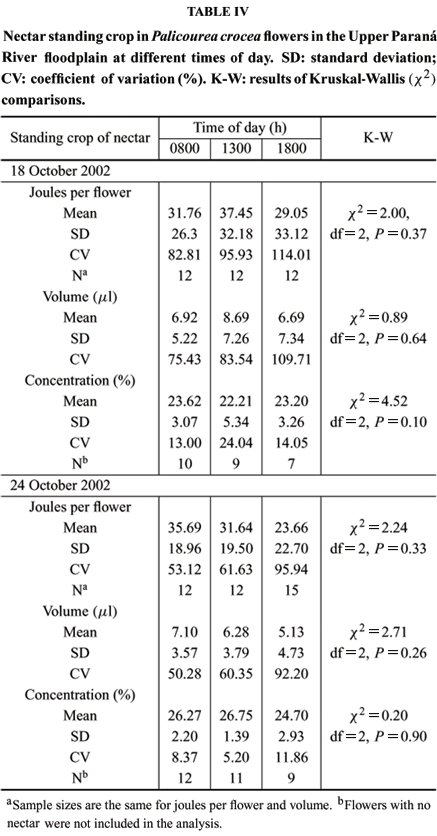We investigated flower morphology, nectar features, and hummingbird visitation to Palicourea crocea (Rubiaceae), a common ornithophilous shrub found in the riparian forest understory in the Upper Paraná River floodplain, Brazil. Flowers are distylous and the style-stamen dimorphism is accompanied by other intermorph dimorphisms in corolla length, anther length, and stigma lobe length and form. We did not observe strict reciprocity in the positioning of stigma and anthers between floral morphs. Flowering occurred during the rainy season, October to December. Nectar standing crop per flowerwas relatively constant throughout the day, which apparently resulted in hummingbirds visiting the plant throughout the day. Energetic content of the nectar in each flower (66.5J) and that required daily by hummingbird visitors (up to 30kJ) would oblige visits to hundreds of flowers each day, and thus movements between plants that should result in pollen flow. Three hummingbird species visited the flowers: the Gilded Sapphire (Hylocharis chrysura), the Black-throated Mango (Anthracothorax nigricollis), and the Glittering-bellied Emerald (Chlorostilbon aureoventris). The frequency of hummingbird visitation, nectar features, and the scarcity of other hummingbird-visited flowers in the study area, indicate that P. crocea is an important nectar resource for short-billed hummingbirds in the study site.
bird-plant interactions; heterostyly; pollination; Brazilian Atlantic forest; riparian vegetation; conservation







